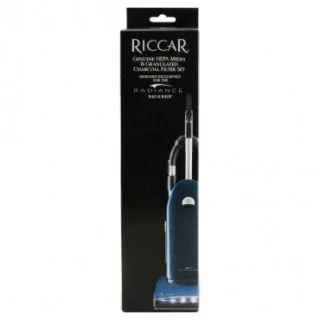Riccar Tandem Air Brush Issues
The Hall Sensor within Riccar or Simplicity vacuum cleaners serves as a pivotal element tasked with identifying the rotation of the brush roll. Its crucial function becomes evident when the brush roll encounters an obstruction or ceases to spin, as the Hall Sensor plays a vital role in automatically shutting off the machine to avert potential damage. Should you observe inaccuracies in your vacuum’s detection of brush roll motion, it could indicate the need to replace the Hall Sensor. This comprehensive guide will lead you through the step-by-step process of replacing the Hall Sensor in Riccar or Simplicity vacuum cleaners.
Models this article is relevant to include:
R40.LE, R40, R40.2, R40P.LE, R40P, R40P.2, R40P.4, R40P.6,S40, S40.2, S40P.LE, S40P, S40P.2.
What parts do you need?
We sell high-quality replacement parts to ensure long-lasting and effective repairs! You can also check the schematic page for this vacuum cleaner.
-
Main PCB for riccar R40 and simplicity S40
$162.79Original price was: $162.79.$129.79Current price is: $129.79. Add to cart
How do I know when to...
Replace my Riccar Tandem Air hall sensor?
Hall Sensor Fails to Detect Brush Roll
If the vacuum brush roll stops engaging properly, the hall sensor may be failing to detect rotation. This can cause the vacuum to lose its automatic height adjustment function.
Erratic Brush Roll Behavior
A faulty hall sensor can cause the brush roll to start and stop intermittently, or not activate at all. This can mimic motor or clutch issues, but the root cause may lie in the sensor itself.
No LED or Error Light Response
On some Riccar Tandem Air models, the hall sensor works in tandem with error indicators. If there’s no response or feedback from the vacuum despite brush roll failure, the hall sensor may be unresponsive or misaligned.
Vacuum Suddenly Shuts Off Mid-Clean
A failing hall sensor may falsely signal a motor overload or safety issue, causing the vacuum to shut down prematurely. If the unit powers off unexpectedly when switching between floor types, the sensor could be the culprit.
Let's get down to business...
Step-by-Step Repair Guide
Step 1: Understand the Problem
If your Riccar Tandem Air vacuum is shutting off the brush roll and showing a red light warning (as if the roller is jammed), it may be a false reading from the hall sensor. Before diving into a PCB replacement, inspect for:
Debris around the brush roll or hall sensor.
A stretched belt (even though it’s labeled “lifetime”).
A jammed or unspinning brush roll.
Step 2: Disassemble the Base and Brush Roll Area
Flip the vacuum over on a workbench.
Remove the baseplate by unscrewing 2 visible screws.
Check the brush roll – it should spin freely. Clean and lubricate it if necessary.
Remove the brush roll.
Remove 5 screws from the base (2 behind wheels and 3 on the underside).
Recline the vacuum, release the top housing clips, and lift the top cover off.
Step 3: Inspect and Replace the Belt
Inspect the “lifetime” belt for stretching or wear.
If the belt is loose or slipping, replace it even if it appears intact.
Step 4: Access the Motor and PCB
Stand the vacuum upright to safely remove the spring assist (to avoid tension).
Remove 4 motor mount screws and set the motor aside.
Snip the zip tie holding the wire bundle and free the wiring loom.
Remove the intake housing by unscrewing 3 screws.
Lift the upper housing out from the lower unit.
Step 5: Remove the PCB
Carefully detach all wire connectors and ribbon cables (no clips—pull firmly).
Take a photo of the wiring for reassembly reference.
Remove the old PCB.
Step 6: Install the Grounding Upgrade
If your unit is revision .6 or earlier, install the grounding upgrade:
Replace the original ground wire with a lock washer and grounding clamp.
Ensure the clamp contacts the conductive tape to prevent static buildup.
Step 7: Install the New PCB
Plug in all wiring connectors and ribbon cables securely.
Reattach the hoses and airflow sensors.
Mount the PCB in its housing.
Step 8: Reassemble the Vacuum
Fit the upper housing back into place, aligning gaskets and grooves.
Secure both motor mounts and zip-tie the wiring in place.
Reinstall the intake housing and screws.
Reinsert the spring assist mechanism and any detached housing pieces.
Step 9: Reinstall the Brush Roll and Belt
Place the belt over the motor pulley and fit the brush roll into position.
Snap the brush roll in. It will be tight—it’s a serpentine belt, not stretch-type.
Reattach the baseplate with 2 final screws.
Step 10: Test the Repair
Power on the vacuum and test brush roll function.
Apply light pressure on carpet to ensure the motor stays engaged.
Verify the red light activates only when you intentionally jam the brush roll (indicating a working hall sensor).
You also might need...
Other Items for This Repair
While completing this repair, you should check these other important items on your vacuum cleaner to ensure the best possible performance and longevity!
-
Riccar HEPA Vacuum Bags Charcoal Infused Type P for R40 and Radiance – 6pk
$25.99Original price was: $25.99.$21.99Current price is: $21.99. Add to cart -
Riccar R40P Filter Set Hepa Granulated Charcoal Motor
$45.99Original price was: $45.99.$36.99Current price is: $36.99. Add to cart
Final Thoughts
Replacing the Hall Sensor in your Riccar or Simplicity vacuum is a task that can restore accurate brush roll motion detection, ensuring the vacuum’s effective operation. Regular maintenance and timely replacement of faulty components contribute to the longevity and reliable performance of your vacuum cleaner. If you encounter challenges or are uncertain about any step, consult your vacuum’s user manual or seek professional assistance. Regular inspections and necessary repairs will maintain your vacuum’s smooth operation for years to come.
Need More Stuff?
We offer comprehensive part diagrams and repair tutorials to help you keep your vacuum running at its best. VacuumsRus is your one-stop-shop for anything vacuum cleaner related!







